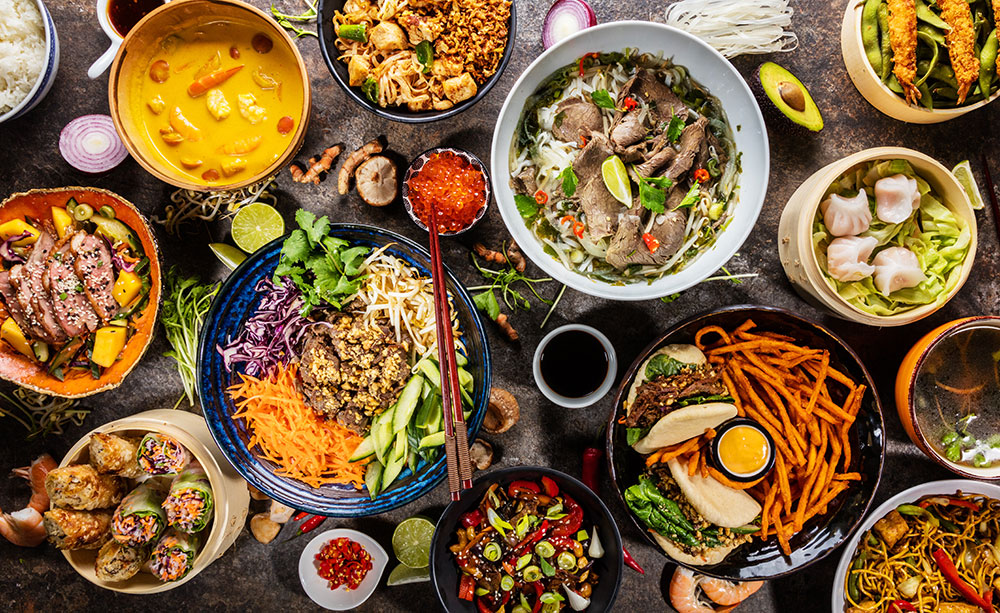
- This event has passed.
Asian American and Pacific Islander Heritage Month Food Celebration
May 26, 2022 - May 27, 2022

Colby Cafeteria Food Celebration
Asian American, Native Hawaiian, and Pacific Islander (AANHPI) Heritage Month is observed each May to celebrate the contributions that generations of AAPIs have made to American history, society, and culture. The AAPI umbrella term includes cultures from the entire Asian continent – including East, Southeast and South Asia – —and the Pacific Islands of Melanesia, Micronesia and Polynesia.
As of 2019, there were about 22.9 million people of Asian or Pacific Islander descent in the United States.
To honor AAPI Month and our many caregivers who it encompasses, join us May 26 and 27 at the Colby cafeteria for a celebratory meal.
Menu
- Scallion pancakes
- Pancit
- Poke
- Sweet potato donuts
“Anger can teach us forgiveness, hate can teach us love, and war can teach us peace.” — Le Ly Hayslip, author of “When Heaven and Earth Changed Places: A Vietnamese Woman’s Journey from War to Peace
“There are many ways in which America tells you you don’t belong…. A polite people, it is the facial muscles, the shoulder tension, and the silence that give away white Americans’ uneasiness with people not like them. The United States, a nation of immigrants, makes strangers only of those who are visibly different, including the indigenous people of the continent. Some lessons begin in infancy, with silent performances, yet with eloquent instructions.” — Shirley Geok-lin Lim, author of “Among the White Moon Faces
Here are ways to celebrate AAPI Month with your team:
Come learn about some traditional Asian American and Pacific Islander cuisine at the Colby cafeteria
On May 26 and 27, be sure to stop by the Colby cafeteria to enjoy a meal that represents the diverse cultures celebrated during AAPI month.
Virtual tour
Take a virtual tour of some beautiful and impactful locations that represent different areas of AAPI. Examples include:
- NYC Chinatown
- Cherry Blossoms Around the World
- Asian Art Museum
- Kyoto National Museum
- Wing Luke Museum
- Great Wall of China
- National Museum of Korea
- Taj Mahal
- Angkor Wat
- Thailand
- Vietnam Heritage Sites
Practice mindfulness/yoga
Yoga originated in India more than 5,000 years ago. Take time this month to either try yoga for the first time or expand your practice.
Widen your lens and perspective
Asian heritage goes beyond Chinese or Japanese ancestry. Asian ancestry can stem from Taiwan, Korea, Indonesia, Vietnam, Laos, Cambodia, the Philippines, Samoa, Fiji, Guam, or South Asian countries like India, Pakistan, and Bhutan, just to name a few. Community members might also be mixed race, or hold multiple citizenships. Not to mention, folks from similar geographic backgrounds can have entirely different experiences and beliefs. There is no one definitive Asian experience, and it is important to celebrate the diversity of the community while planning programming.
Focus on inclusion
You don’t have to be of Asian descent to enjoy Asian Pacific Heritage Month. The month is about giving members of the community due praise and attention and acknowledging the contributions these individuals make to society. Pride aside, the month calls for inclusion.
While May is a time to shine a spotlight on the Asian community at large, you shouldn’t make your Asian staff feel singled out. Ask for volunteers to lead activities, but don’t make your Asian staff feel obligated to participate or take on the responsibility of planning. This gesture may be well-meaning, yet can make staff feel alienated. Expressions of culture are highly personal, and you should leave matters of identity up to staff comfort level.
